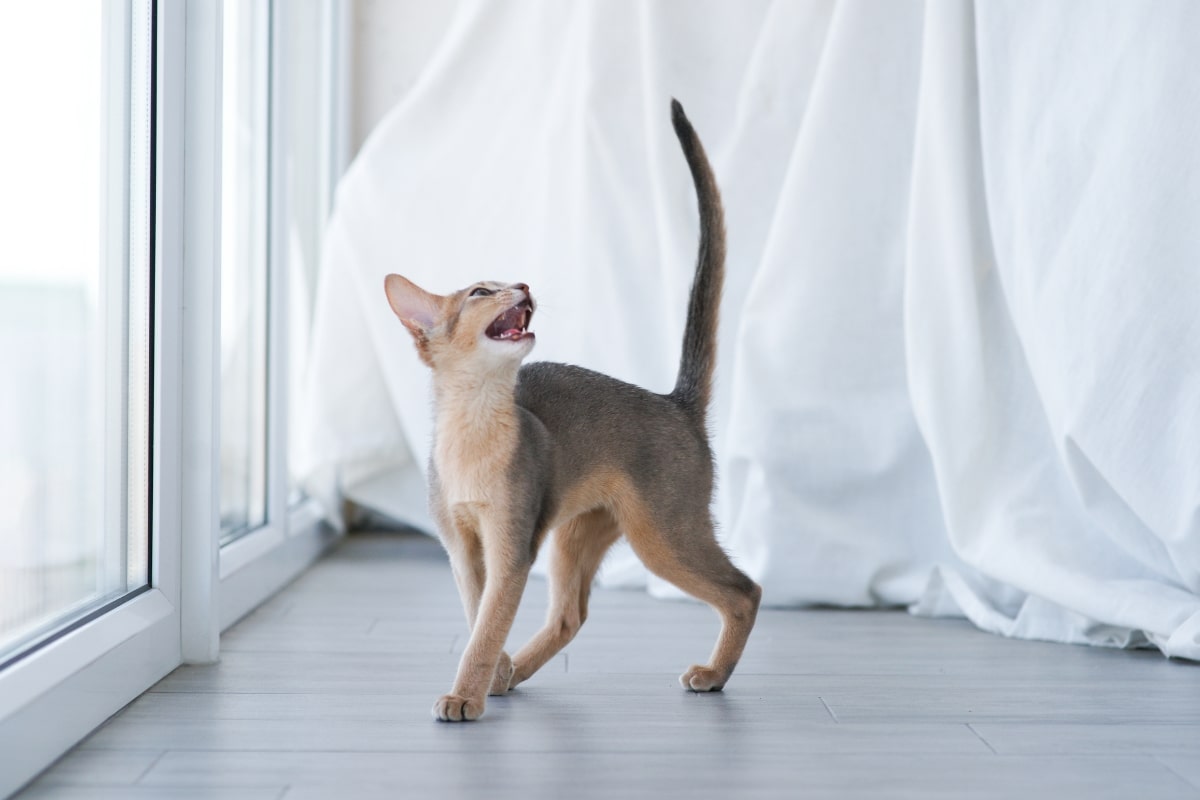
Cats are fascinating creatures, but sometimes their behaviour can be a little puzzling. Whether it’s a mysterious meowing sound, an unexpected scratch or a quirky habit, it’s important to understand what your furry friend is trying to tell you. Here’s a helpful guide on common cat behaviours with tips on how to keep your feline happy and healthy.
Common cat behaviours
There are a number of common cat behaviours that you might notice with your feline at home:
- Meowing
- Purring
- Scratching
- Kneading
- Grooming
- Playfulness
- Hiding
- Using the litterbox (or avoiding it)
Meowing
If your cat meows at you, they probably want something from you. Either that, or they are judging you (which tends to be their fave pastime). Cats meow for a variety of reasons, including hunger, thirst, boredom, or wanting attention. If your feline starts meowing more than usual, something else may be up. Keep an eye on their behaviour and if it continues, reach out to your vet for help.
Purring
One of the most common cat behaviours is purring. They do this to communicate and show contentment. The soft rumble is also a form of self-soothing. Cats therefore also purr when they’re injured or after experiencing stress. If your cat is purring excessively, it might be a sign that a check-up with the vet is in order.
Scratching
Any cat owner knows that a cat’s claws are sharp! Scratching is a natural behaviour for cats, as it helps them to keep their claws in good condition and mark their territory. It’s not the best though when they start scratching your furniture or other household items. Try to redirect their behaviour with a scratching post, your table and couch will thank you for it!
Kneading
Does your cat like to knead their paws while they’re curled up on your lap? Good news, your cat adores you! Even though it might feel like a painful massage, it’s actually their way of telling you they love you right back. Ironically, the happier they are, the harder they’ll dig in with their sharp nails. It’s true, love hurts!
Grooming
Cats are fastidious groomers, and spending time grooming themselves helps to reduce stress and promote relaxation. However, excessive grooming can be a sign of underlying health and skin issues, so keep an eye on your cat’s grooming habits if they suddenly change.
Playfulness
Play is an important part of a cat’s life, and it helps to keep them active and engaged. Encourage your cat to play by providing plenty of toys and interactive games. Keeping them entertained will also prevent them from getting into your own things.
Hiding
Peek-a-boo! Cats often hide when they feel threatened or uncomfortable, so don’t take it personally! Provide plenty of hiding places in your home so they have enough safe spaces to escape to. This can include a cosy bed, a cardboard box or a hiding tree.
Using the litter box (or not)
Is your cat toilet-trained and are they suddenly peeing outside their litter box? Cats can be high-maintenance and this could be a sign you need to clean the litter box and change the litter more frequently. If their box is nice and fresh and your cat is still doing their business outside the litter box, it might be a sign of a health issue, such as a urinary tract infection. Your vet will be able to tell you what’s causing it.
Why should I pay attention to cat behaviours?
By paying attention to your cat’s behaviours, you can help ensure that your furry friend is happy, healthy and well-cared for. If you’re ever in doubt about any cat behaviours, seek advice from your vet, as they will be able to provide you with the best advice and support.
More kitty content
- How do I Know if my Cat Likes Me?
- Why Your Cat is Best Kept Inside
- How to Calm an Anxious Cat
- Why do Cats Like the Sun So Much?
